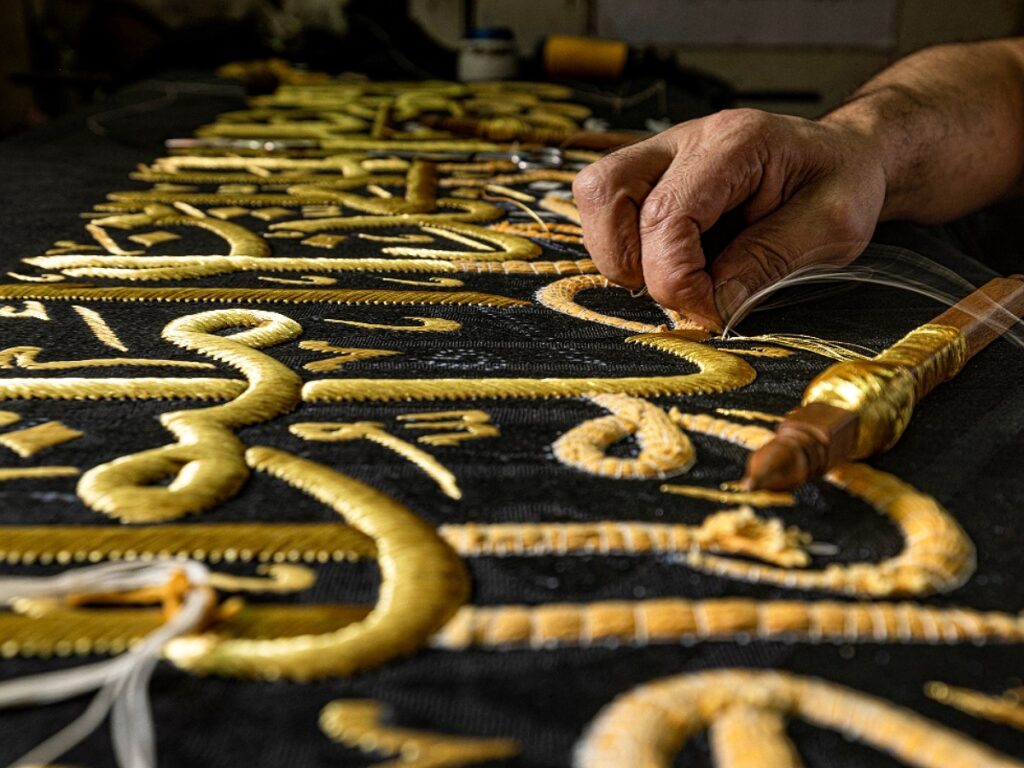
Riyadh: The annual customary tradition of changing Kiswah (Ghilaf-e-Kaaba) at the Grand Mosque in Makkah, Saudi Arabia, will take place on the first of Muharram, marking the beginning of the new Islamic year 1446 AH.
As many as 159 technicians and craftsmen will take part under the supervision of the head of the presidency Sheikh Abdulrahman Al-Sudais.
More than 200 qualified and specialized Saudi craftsmen and administrators worked on producing the 56 pieces of hand-embroidered kiswah at the King Abdulaziz Complex for Holy Kaaba Kiswah in Makkah. Each piece took between 60 to 120 days to embroider.
In the Islamic calendar, the installation of the new Kiswah is an important event. The Kaaba is draped in a new Kiswah every year due to the sanctity of the building.
The Kiswah, traditionally changed on the ninth or 10th day of Dhul-Hijjah, but was moved to the first day of Muharram in 2022.
After the old Kiswah is removed, it is cut into small pieces and distributed to individuals such as visiting foreign Muslim dignitaries as well as organizations.
It was initially distributed among Kaaba curtain holders, but later the Saudi Arabian government decided to send it as a gift to various Muslim countries.
The Kiswah, which is black, is made up of 670 kilograms (kg) of raw silk with verses from the Quran woven in gold-plated thread. The verses are woven using 120kg of gold and 100kg of silver threads.

The Kiswah consists of the names and attributes of Allah, including Ya Allah, Ya Mannan, Ya Dayyan, Subhanallahi Wa Bihamdihi Subhanallahil Azeem, and La ilaha illallah Muhammadur Rasulullah.
The Kaaba door features five curtains with Quranic verses and three complete surahs: Al-Fatiha, Al-Falaq, An Nas, and Quraysh.



